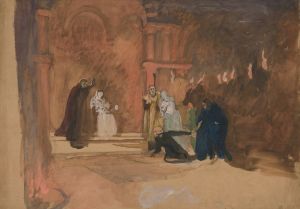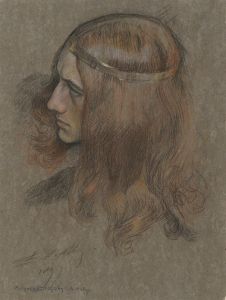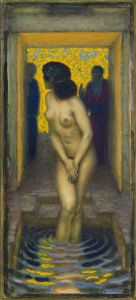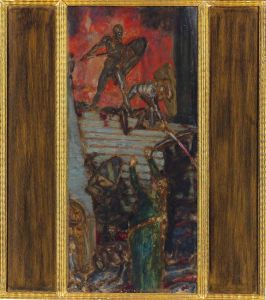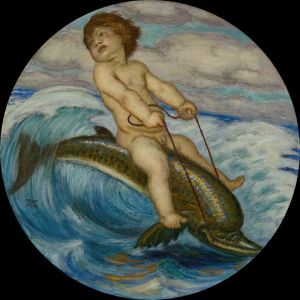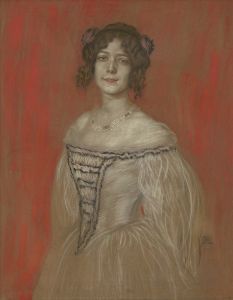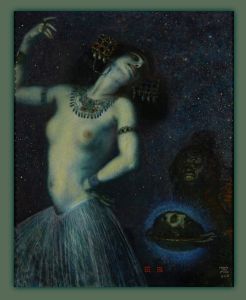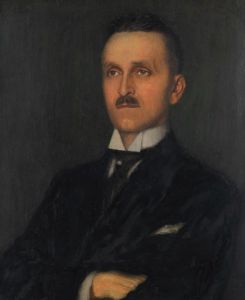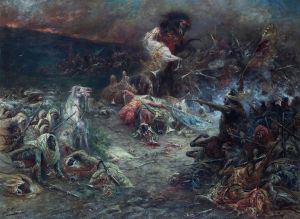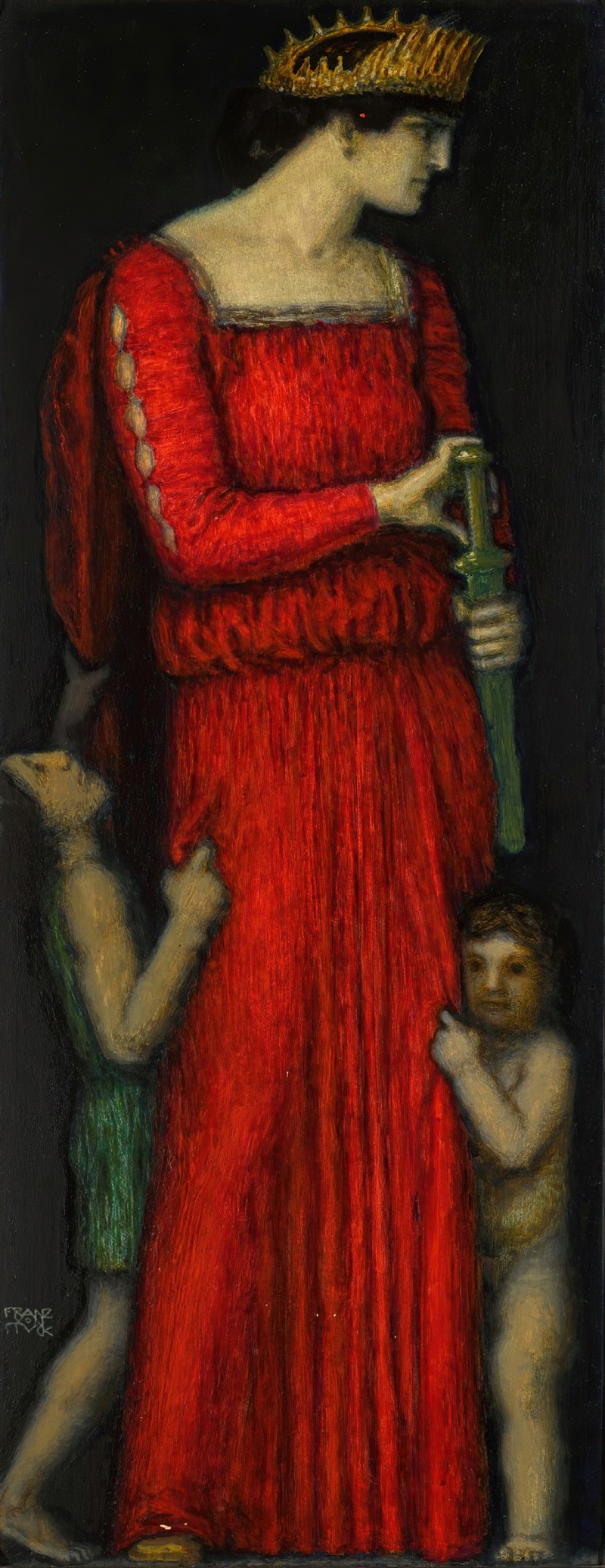
Medea
A hand-painted replica of Franz von Stuck’s masterpiece Medea, meticulously crafted by professional artists to capture the true essence of the original. Each piece is created with museum-quality canvas and rare mineral pigments, carefully painted by experienced artists with delicate brushstrokes and rich, layered colors to perfectly recreate the texture of the original artwork. Unlike machine-printed reproductions, this hand-painted version brings the painting to life, infused with the artist’s emotions and skill in every stroke. Whether for personal collection or home decoration, it instantly elevates the artistic atmosphere of any space.
Franz von Stuck's painting "Medea" is a notable work by the German symbolist artist, created in 1892. Stuck, who was a prominent figure in the Munich Secession movement, often explored mythological and allegorical themes in his art, and "Medea" is a prime example of this interest.
The painting depicts Medea, a figure from Greek mythology known for her sorcery and tragic story. Medea was the daughter of King Aeëtes of Colchis and is most famously known for her role in the myth of Jason and the Argonauts. She fell in love with Jason and used her magical abilities to help him secure the Golden Fleece. However, her story takes a darker turn when Jason betrays her, leading to a series of vengeful acts that have cemented her as a complex and often controversial character in mythology.
In Stuck's portrayal, Medea is depicted in a moment of intense emotion, capturing the duality of her character as both a loving mother and a figure capable of great wrath. The painting is characterized by its dramatic use of color and light, typical of Stuck's style, which often emphasized mood and psychological depth. The background is dark and atmospheric, drawing attention to Medea's expression and posture, which convey a sense of inner turmoil and determination.
Stuck's "Medea" reflects the broader symbolist movement's interest in exploring the subconscious and the darker aspects of the human psyche. Symbolism, which emerged in the late 19th century, sought to express the ineffable and the mysterious through art, often using mythological and dream-like imagery. Stuck, along with other symbolists, aimed to evoke emotion and provoke thought through his work, inviting viewers to delve into the complexities of human nature and myth.
The painting is also notable for its technical execution. Stuck was known for his meticulous attention to detail and his ability to convey texture and form. In "Medea," the use of chiaroscuro enhances the three-dimensionality of the figure, while the composition draws the viewer's eye to the central figure, emphasizing her isolation and emotional intensity.
"Medea" by Franz von Stuck is housed in the Städtische Galerie im Lenbachhaus in Munich, Germany. The Lenbachhaus is renowned for its collection of works from the Munich Secession and the Blue Rider group, making it a fitting home for Stuck's work. The painting remains an important piece within the context of symbolist art and continues to be studied for its artistic and thematic significance.
Overall, Franz von Stuck's "Medea" is a compelling representation of a mythological figure whose story has resonated through the ages. Through his skillful use of symbolism and his focus on the psychological aspects of his subjects, Stuck created a work that invites viewers to explore the depths of myth and emotion.





